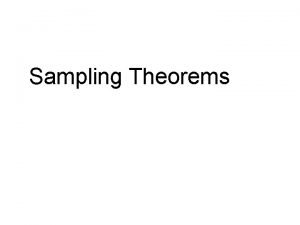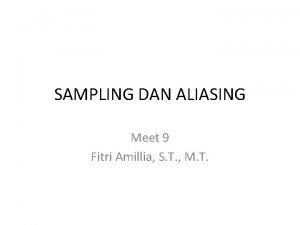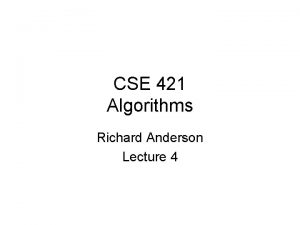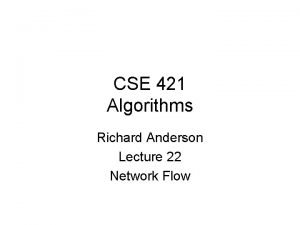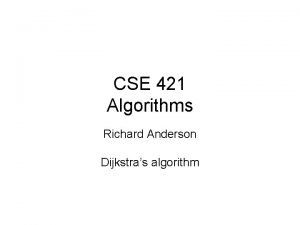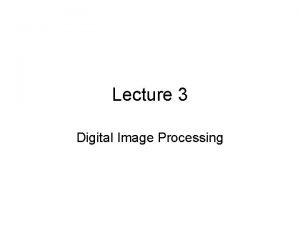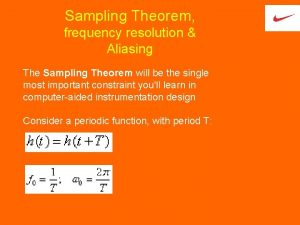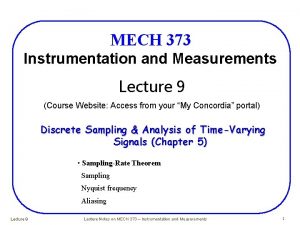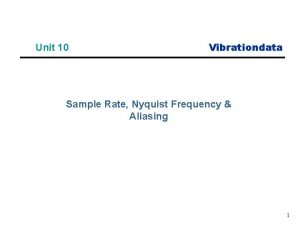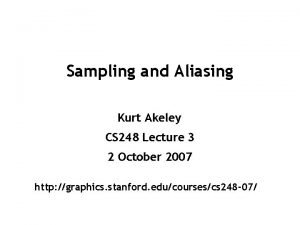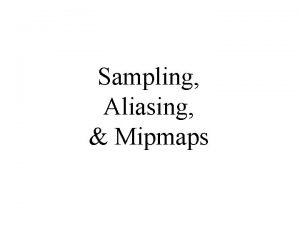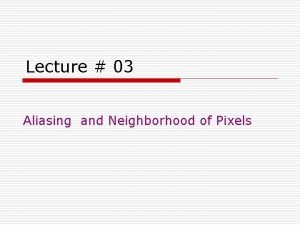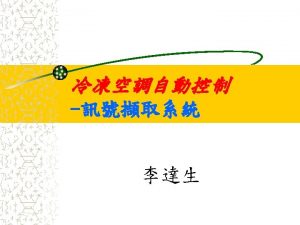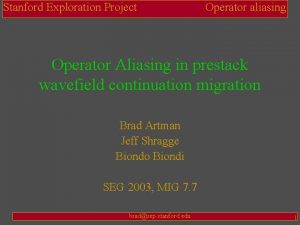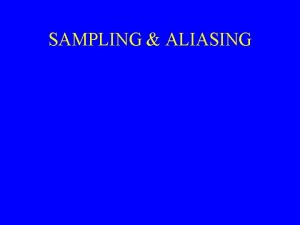Sampling and Aliasing CSE 421 Digital Control Lecture












- Slides: 12

Sampling and Aliasing CSE 421 Digital Control Lecture 4 1

Introduction • A digital control system operates on discrete signals obtained from sampling continuous signals. • In order for the samples to be good representative of the original signal, the sampling rate should be large enough; otherwise, aliasing could occur. • In these slides, we discuss the condition under which aliasing problem can be avoided. 2

Ideal Sampling • A sampler is basically a switch closing every T seconds to generate a sampled signal r*(t) from a continuous signal r(t). • The process can be described as a multiplication of r(t) with an impulse train to generate r*(t) or a sequence of samples r(k. T): 3

Recovery of r(t) from r(k. T)? • It seems that r(t) can be recovered from r(k. T) if T is small or the sampling frequency ws = 2π/T is high. The question is how small T is enough? • To answer this question we study the frequency spectrum of the sampled signal r∗(t). 4

Frequency spectrum of r∗(t) • As we have seen, r*(t) is represented as: • Let the frequency spectrum of r(t) be R(w) and assume that it is band limited from –w 0 to w 0 as shown. • The frequency spectrum of r*(t): 5

R∗(w) Two things happen to the frequency spectrum of r(t) when it is sampled: 1. The magnitude of the sampled spectrum is 1/T that of the continuous spectrum, it is scaled by 1/T. 2. The summation indicates that there an infinite number of repeated spectra in the sampled signal, and they are repeated every ωs = 2π/T along the frequency axis. 6

Example 1 • Consider continuous function r 1(t) band-limited to ωs/2. • The original amplitude spectrum |R 1 (jω)| and the sampled spectrum |R∗ 1 (jω)| are shown below. • As can be seen, the spectrum R 1 (jω) can be extracted from the repeated spectra R∗ 1 (jω) using an ideal LPF with cutoff frquency ωs/2 (the Nyquist frequency). The filter passes the original spectrum and rejects the repeated spectra. 7

Sampling Rate • A continuous time signal band limited in the interval ( -wo, wo) can be recovered uniquely by its samples if the sampling frequency ωs > 2 wo. • Therefore, the first rule is: sample at least twice the largest frequency in the signal of interest. • In practice, ωs > 10 wo. • Another Issue: If the signal of interest contains noise (unwanted signal usually of high frequency), it will appear as a low frequency signal after sampling Aliasing Problem. 8

Antialiasing filter • To remove the effect of noise, an anti-aliasing filter is used, before sampling, to filter out those frequencies above ωs/2. Otherwise, those unwanted frequencies will erroneously appear as lower frequencies after sampling. Control scheme with an antialiasing filter 9

Zero-order hold • It is not possible to implement an ideal LPF. • In practice, ZOH is used to reconstruct continuous signal from discrete samples. It holds the last sample value until a new sample arrives. This is the exact behavior of a D/A. 10

ZOH • ZOH is an approximate LPF and can accurately follow the input signal if the sampling time T is small compared to the transient changes in the signal. • The impulse response of a ZOH is shown below. • From which, the transfer function of ZOH can be deduced as: 11

Example A continuous signal r(t) is applied to an ideal sampler followed by a ZOH as shown below. Sketch the signal waveforms after the sampler and the ZOH. Answer 12
